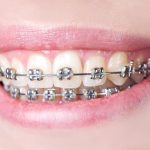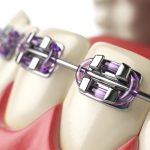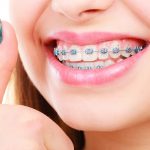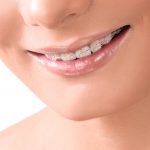The Dental Braces Procedure: Treatment, Removal and Recovery
Medically Reviewed by: Gary Hirsh, DDS, MS
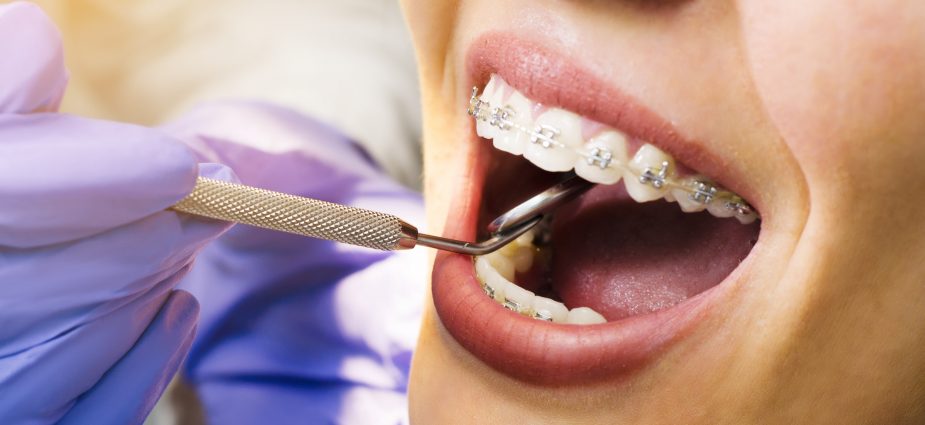
On this page:
When a person is referred to an orthodontist, they first undergo a consultation that involves an initial examination, discussion of dental history and review of X-rays of their teeth and mouth. This helps the orthodontist determine whether the condition is serious enough to require dental braces and, if so, what the most appropriate treatment is, and how long it will take. Sometimes, an orthodontist may feel that another treatment option will not only correct the problem, but fit the person’s needs much better.
Braces Procedure
When dental braces are placed, a cheek retractor is used to keep the teeth visible and dry during the procedure. The teeth are first polished to ensure that the brackets will bond properly, after which they are air-dried.
A conditioner is used on the front surfaces of the teeth for 30 seconds to further prepare them for bonding the brackets. This is cleaned off, the teeth are dried, and an adhesive primer is placed on the teeth to enhance the bonding process.
Cement is placed on the back of the brackets, which are then applied to the predetermined positions on the teeth. Once the brackets are in place, excess cement is removed, and the brackets are hardened into place with a high-intensity light. The retractor is removed, and the dental arch wires are then put into place.
The entire process of bonding the brackets and placing the arch wires can take anywhere from 10 to 20 minutes. The length of time is often determined by the time it takes to position the components correctly in order to treat the person’s specific condition.
When braces are first placed and then later adjusted, you can expect to feel some tightness, which typically progresses to soreness, for approximately four to six hours after your appointment. This soreness is a direct result of arch wires tightening the teeth into position. Over-the-counter (OTC) pain relievers are recommended to help relieve this pain. You can expect the soreness to decrease in about three to five days.
Adjustments
Once your braces are in place, regular adjustment appointments are necessary. This is because the elastic ties holding the wires in proper place stretch and weaken over time. Without adjustments, the wires would be incapable of creating the proper pressure to correct the dental issues requiring treatment.
During adjustment appointments, your orthodontist also has the opportunity to evaluate the movement of your teeth and the progress made. This allows for recommendations that may improve the final outcome of the treatment plan.
It takes a minimum of three weeks for tooth movement to occur, meaning that many adjustment appointments are made every three to 10 weeks. With the newer wires available today, however, adjustments may be required less frequently, since they tend to provide longer working ranges.
Adjustment appointments involve removing the colored elastic ties which hold the dental braces in place. The arch wires also are removed so that you may brush and floss your teeth thoroughly. Your orthodontist will then check treatment progress and recommend new wires and bands. If alternative treatment options are available at this time, your orthodontist will discuss them with you. New wires and elastics are then placed to continue moving the teeth and proceed with treatment.
After your braces are adjusted, you can expect to feel some tightness, typically progressing to soreness that lasts for approximately four to six hours after the adjustment procedure. This soreness is a direct result of the replacement wires tightening the teeth into position. OTC pain relievers are suggested to help relieve this pain, which is the same as when your dental braces were initially placed.
Living With Dental Braces
For braces wearers, it is important to maintain proper oral hygiene and avoid certain types of food. Inadequate brushing may lead to damage of the enamel, so it is very important to brush at least three times a day. Many orthodontists suggest carrying a tooth brush with you so that you may brush your teeth after lunch while at work or school.
Interdental brushes and a water pik should be used to clean underneath the dental arch wires for even better oral hygiene. Fluoride mouth rinses are also recommended to maintain the underlying enamel and tooth structure.
Orthodontists also suggest diets which avoid sticky foods, since they can become stuck under the braces and possibly cause detachment. Hard foods and candy also should be avoided; they may break the bond between the brackets and the enamel, or possibly the braces themselves.
Foods such as apples should be cut into pieces to avoid damage. Avoid foods and drinks with high sugar and acid content, since they make oral hygiene much more difficult and could lead to enamel damage.
Removal
When your orthodontist determines that your treatment is complete, your braces will be removed with a simple and relatively painless process. The bond between the brackets and your teeth is safely and gently broken. When the bases of the brackets are squeezed, the adhesive bond releases, and the brackets are removed. During this process, the adhesive is left on the teeth to prevent damage to the enamel and tooth structure.
Once all brackets are removed, the remaining bonding cement is removed using a dental hand piece. This hand piece is typically the same tool that would be used for repairing a cavity, but pain is minimal because no tooth structure is being removed. After all bonding cement removed, your gums may be slightly inflamed, but this will usually subside in a few days with good brushing and flossing.
Recovery & Aftercare
About one to two weeks after dental braces have been removed, an appointment is made for retainer placement. Sometimes, however, retainers can be fabricated and placed at the braces removal appointment.
Retainers are removable orthodontic appliances which are necessary during the “retention period” of orthodontic treatment. During this stage of treatment, the teeth are relatively unstable and must be retained to provide proper completion of treatment.
The retainer is specifically made for your mouth. During the first six months following the removal of dental braces, it is often necessary for someone to wear the retainer full time. After this period, the retainer may only need to be worn at night, but this time is determined at the orthodontist’s discretion.
Once your braces are removed, you should see your regular dentist for a teeth cleaning. Your orthodontist will clean any left-over adhesive off your teeth and the area where the braces were, but it is important to have a thorough oral cleaning after removal.
Teeth whitening also may be considered, since there may be a noticeable difference in color between where the brackets were bonded and the enamel surface. Although you can whiten your teeth with braces in place using gels or tooth pastes, it is recommended that you wait until the dental braces are removed to prevent any mismatches in color or possible damage to the orthodontic components.
About the Reviewer
Gary Hirsh, DDS, MS, of San Diego, Calif., is a board-certified orthodontist focusing on the latest procedures in orthodontics. He is a member of the American Association of Orthodontists, the California Dental Society and the Pacific Coast Society of Orthodontists. He is a past president of the Paul Revere Dental Club, The Neil Brahe Study Club and the San Diego Orthodontics Study Club.



